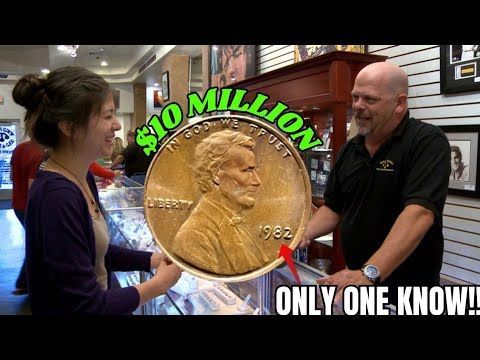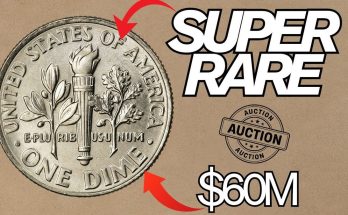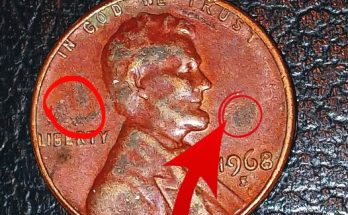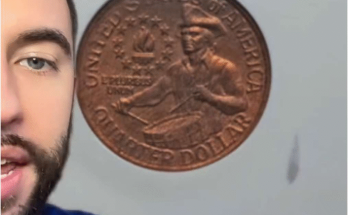The world of coin collecting, or numismatics, is typically governed by a stringent rule: the higher the grade, the higher the value. Coins are meticulously graded on the Sheldon scale from 1 (Poor) to 70 (Perfect Mint State). However, a rare class of coins exists where the sheer magnitude of a mistake or an overwhelming historical anomaly completely obliterates the importance of a perfect grade. These are the extraordinary error and variety Lincoln Cents—the humble one-cent pieces that have become market-defying treasures. We’re talking about pieces whose verifiable existence alone makes them worth thousands, hundreds of thousands, or even millions of dollars, even if they’ve been pulled straight from circulation and show significant wear. Their prices are not just high; they are rising “too fast” because their rarity is being recognized by a new wave of collectors and investors. The focus shifts from preservation to provenance—the verifiable existence of the error itself. Stop looking for perfect coins, and start looking for these five incredible manufacturing blunders.
This is the collector’s dream: coins whose value is anchored by an extreme error or a cripplingly low mintage, making them key dates where the grade literally does not matter for a staggering value proposition. A circulated, low-grade example of any of the coins on this list can still fetch a life-changing amount of money, which is why their value is surging as collectors realize they don’t need a museum-quality piece to strike it rich. They represent the “impossibilities” and “blunders” that slipped out of the U.S. Mint, and their market performance is skyrocketing.
Here are the Top 5 Lincoln Cents That Are Rising Too Fast, Where Grade Does Not Matter:
1. The 1943 Copper Lincoln Cent (The Million-Dollar Mistake)
During World War II, a copper shortage forced the U.S. Mint to switch the cent’s composition to zinc-coated steel for 1943. However, a tiny number of bronze planchets from 1942 were accidentally left in the presses and struck with the 1943 die. Perhaps as few as 15 of these off-metal errors are known to exist. This “Ultimate Impossibility” is arguably the most famous error coin in American numismatics. A single example has sold for over $1 million, and even low-grade pieces command hundreds of thousands of dollars, making its presence, not its condition, the source of its massive, rising value.
2. The 1944 Steel Lincoln Cent (The Reverse Blunder)
The very next year, the Mint made the opposite error. While production was meant to switch back to bronze from recycled shell casings, a handful of leftover 1943-era zinc-coated steel planchets were accidentally struck with the 1944 die. This companion off-metal error is nearly as rare as its predecessor, with only a very small number known to exist from all three mints. Any well-worn example is still valued at $75,000 or more, with auction records climbing to $1.7 million for the 1944-D steel cent. The coin’s color and magnetic properties confirm its unique composition, a fact that far outweighs any minor circulation marks.
3. The 1969-S Doubled Die Obverse (The Elusive Modern Rarity)
The 1969-S DDO is one of the most elusive and valuable Lincoln cents, renowned for its dramatic doubling in the date and inscriptions, which is often visible to the naked eye. This was caused by a blundered die, making it much rarer than the famous 1955 DDO, with fewer than 40 examples certified. It holds auction records up to $1.7 million. Crucially, this is a coin still believed to be found in circulation, and its immense scarcity means that even low-grade examples found in pocket change will result in a life-changing windfall, with the lowest documented value breakdown still over $41,000.
4. The 1955 Doubled Die Obverse (The Iconic Double-Take)
The 1955 DDO remains a cornerstone error coin, displaying extremely bold doubling of the date and the word “LIBERTY”. The dramatic appearance is so pronounced that it was instantly sought after upon discovery. Because the doubling is so obvious, it is an easy coin to authenticate, and its popularity among collectors has kept its value consistently rising. Even a low-grade, circulated example sells for over $1,000, with uncirculated pieces commanding over $30,000. Its status as an iconic, unmistakable error means its value is secured by the boldness of the doubling, regardless of surface blemishes.
5. The 1922 “Plain” Lincoln Cent (The Phantom Mintmark)
In 1922, the Denver Mint struck a number of cents using heavily worn or grease-filled dies. The accumulation of grease on the die for a subset of these coins resulted in the complete obliteration of the “D” mintmark, leading to the highly prized 1922 “Plain” or “No D” error. What makes this coin incredibly valuable, despite its worn origin, is that the Philadelphia Mint did not issue any cents in 1922, so the “No D” must be an error. Even in “fairly bad condition,” these coins are worth over $500, with better circulated pieces easily hitting $2,000 or more. The error itself is the whole story, rendering the coin’s cosmetic grade secondary to its historic anomaly.
Don’t Wait—The Time to Search Is Now
These five Lincoln Cents illustrate a vital lesson for coin enthusiasts: extreme errors and historical anomalies are the true drivers of runaway value. While millions of common pennies circulate, these extreme rarities are commanding staggering, rapidly increasing prices. Forget about trying to find a perfectly preserved coin; look for the distinct signs of these famous blunders in your pocket change, coin jars, and old bank rolls. If you suspect you have one, do not clean it, and seek professional authentication immediately. These are not just coins; they are certified tickets to a potential fortune.



